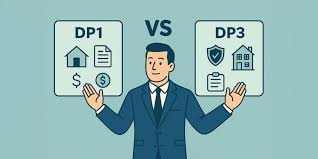Reverse mortgages are an increasingly popular financial product among senior homeowners looking to tap into their home equity to supplement their retirement income. However, navigating the intricacies of reverse mortgages can be daunting. One invaluable tool that can help demystify this process is the reverse mortgage calculator. In this comprehensive guide, we’ll explore what reverse mortgage calculators are, how they work, and how they can help you make informed financial decisions.
What is a Reverse Mortgage?
Before diving into the specifics of reverse mortgage calculators, it’s essential to understand what a reverse mortgage is. A reverse mortgage is a loan available to homeowners aged 62 and older, allowing them to convert part of the equity in their homes into cash. Unlike a traditional mortgage where the borrower makes monthly payments to the lender, in a reverse mortgage, the lender makes payments to the borrower. The loan is typically repaid when the borrower sells the home, moves out permanently, or passes away.
Reverse Mortgage Calculator
A reverse mortgage calculator is an online tool designed to provide potential borrowers with estimates of how much they might be able to borrow through a reverse mortgage. These calculators take into account various factors, such as the age of the borrower, the value of the home, current interest rates, and existing mortgage balances.
Key Inputs for Reverse Mortgage Calculators
To use a reverse mortgage calculator effectively, you’ll need to input specific information. Here are the key factors that most calculators consider:
Age of the Borrower(s): The age of the youngest borrower is a crucial factor, as it influences the loan amount. Generally, the older the borrower, the higher the loan amount they can receive.
Home Value: The appraised value of the home determines the potential loan amount. Higher-valued homes typically qualify for larger reverse mortgages.
Current Mortgage Balance: If you have an existing mortgage, its balance will affect the reverse mortgage amount since it needs to be paid off with the reverse mortgage proceeds.
Interest Rates: Current interest rates play a significant role in determining the loan amount. Lower interest rates can result in higher loan amounts.
Type of Reverse Mortgage: There are different types of reverse mortgages, including Home Equity Conversion Mortgages (HECMs) and proprietary reverse mortgages. The type of reverse mortgage chosen will influence the loan amount.
How Reverse Mortgage Calculators Work
Reverse mortgage calculators use a set formula to estimate the loan amount. While the exact formula may vary slightly among different calculators, the basic principle remains the same. Here’s a step-by-step breakdown of how these calculators typically work:
Input Information: You enter your age, home value, existing mortgage balance, and interest rates into the calculator.
Calculate Principal Limit: The calculator determines the principal limit, which is the maximum amount you can borrow. This is based on the age of the youngest borrower, the home value, and the interest rates.
Subtract Existing Mortgage Balance: If you have an existing mortgage, the calculator subtracts this amount from the principal limit to determine the available loan amount.
Consider Loan Costs: The calculator may also account for loan costs, such as origination fees, mortgage insurance premiums, and closing costs, to provide a net loan amount.
Provide Estimate: The calculator then provides an estimate of the loan amount you can receive, either as a lump sum, monthly payments, or a line of credit.
Benefits of Using a Reverse Mortgage Calculator
Using a reverse mortgage calculator offers several advantages:
Informed Decision-Making: It helps you understand how much you can potentially borrow, enabling you to make informed decisions about whether a reverse mortgage is right for you.
Financial Planning: Knowing the estimated loan amount allows you to plan your finances better, especially if you’re relying on the reverse mortgage to supplement your retirement income.
Comparison Shopping: By using multiple calculators from different lenders, you can compare offers and choose the one that best suits your needs.
Transparency: Calculators provide a transparent look at how different factors, such as age and interest rates, affect the loan amount, giving you a clearer picture of your financial options.
Limitations of Reverse Mortgage Calculators
While reverse mortgage calculators are useful tools, they have limitations:
Estimates Only: Calculators provide estimates, not guaranteed loan amounts. The actual loan amount will be determined through a formal application and appraisal process.
Varied Formulas: Different calculators may use slightly different formulas, leading to variations in the estimated loan amount. It’s essential to understand the assumptions and formulas used by each calculator.
Loan Costs: Calculators may not always include all potential costs associated with a reverse mortgage, such as servicing fees or property taxes, which can impact the net loan amount.
Reverse Mortgage Calculator
Reverse mortgage calculators are invaluable tools for seniors considering a reverse mortgage. They provide a preliminary estimate of the loan amount, helping you make informed decisions and plan your financial future. However, it’s crucial to remember that these calculators offer estimates and not definitive answers. To get an accurate and comprehensive understanding of your reverse mortgage options, it’s advisable to consult with a reverse mortgage counselor or a financial advisor. By combining the insights from a reverse mortgage calculator with professional advice, you can make the best decision for your unique financial situation.
For more information and to try out a reverse mortgage calculator yourself…








